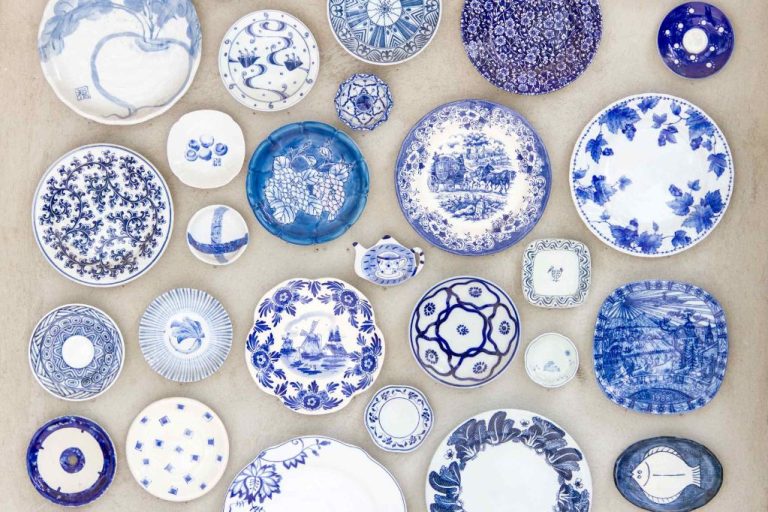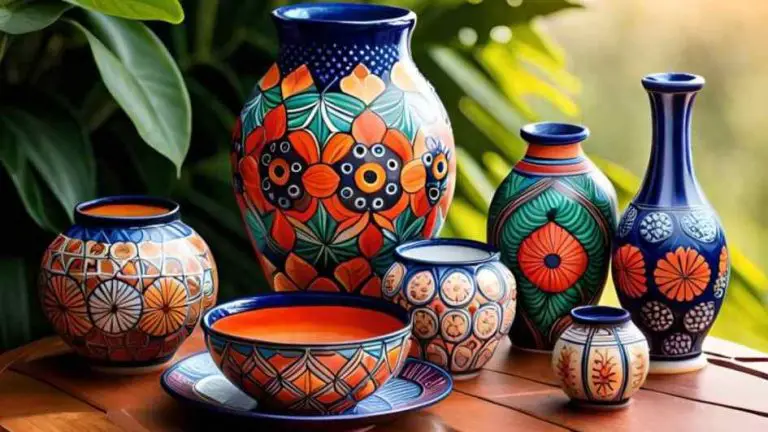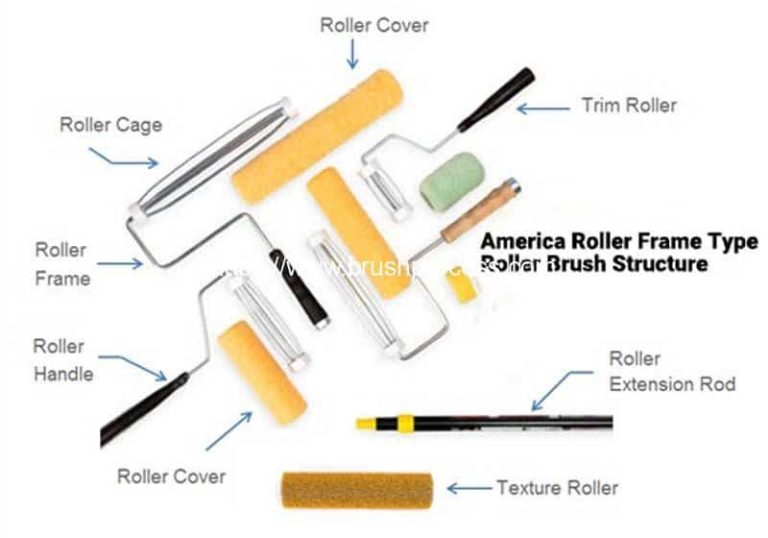How Can You Tell If Delft Blue Is Real?
Delft Blue refers to the famous blue and white pottery that originated in the city of Delft in the Netherlands in the 17th century. It was inspired by Chinese porcelain that was highly desired but difficult to obtain at the time. Dutch potters began experimenting with local clays and glazes to imitate the look of Chinese porcelain, resulting in the iconic Delft Blue style.
Delft Blue became extremely popular and was exported around the world during the 17th and 18th centuries. The term “Delftware” refers to tin-glazed pottery produced in the Netherlands between the 16th and 18th centuries. While much Delftware was made in Delft, it was also produced in other Dutch cities.
Today, authentic antique Delft Blue pieces from the 17th and 18th centuries are highly prized by collectors and can sell for thousands of dollars at auction. The rarity and artistry of the original hand-painted pieces make them very valuable. Characteristics like the quality of the clay, glaze, painting style, and condition help determine the value.
To identify authentic Delft Blue, it’s important to look for several distinguishing marks. Hallmarks like the city coat of arms, factory marks, and painter’s marks help verify age and provenance. Other aspects like the color, style, glaze, and foot ring provide clues about authenticity.
This guide will examine the key traits of genuine Delft Blue porcelain to help determine if a piece is the real thing or an imitation.
Look for the Delft Blue Mark
Authentic Delft Blue pottery pieces are marked with a distinguishing mark to identify the manufacturer. According to the Delftsaardewerk website, “Delftware may have a mark on the base or back consisting of letters or figurative symbols. These are makers’ marks that indicate where the object was manufactured”. The mark is typically located on the bottom or backside of the ceramic piece.
The marking system has evolved over the long history of Delft pottery production. In the 17th century, pieces were marked with the city coat of arms depicting a staff and three St. Andrew’s crosses. Later, individual factory marks emerged, often using the factory owner’s initials or monogram. According to Royal Delft, “Below to the left the painter’s initials are painted and on the right a year code”. Checking the mark against a reference guide can help identify the age and origins of an authentic Delft Blue piece.
Examine the Color
![]()
The distinctive blue color used in authentic Delft pottery is a key indicator of its authenticity. Genuine Delft Blue uses a cobalt blue pigment that gives it a deep, vivid blue tone. This pigment was originally imported from Persia, and later Germany, which made it expensive and increased the value of Delft ware Royal Delft.
Cheaper imitations will use inferior blue pigments that result in a lighter, duller blue color. The intensity of the blue varies slightly across authentic antique pieces due to fading over time and the variability of different cobalt pigment batches, but remains recognizably rich and vibrant Aronson. Modern authentic pieces will have colors very close to antique Delft.
So examine the color closely. An electric, slightly purplish blue is a giveaway of authenticity. Paler or grayish blues may indicate a fake.
Consider the Painting Style
Delft Blue painters use a variety of brushwork techniques to create delicate designs. The brushwork is very controlled, with precise, thin lines used for details. Delft painters also utilize broad brushstrokes for larger areas of color.
Specific motifs have characteristic painting styles. For example, the “fence” patterns are painted using repetitive flicking motions with the brush to create the short parallel lines. Flower bouquets and other floral designs often feature both broad strokes for the main elements and fine details for leaves and stems.
Birds and insects incorporate fine lines for legs and antennae along with broader strokes for the bodies. Delft animals frequently have visible brush marks that imbue them with a sense of motion or liveliness. The painting styles give Delft Blue its distinctive handcrafted aesthetic.
Sources:
https://museum.royaldelft.com/en/discover-the-collection/our-craftsmanship/
Assess the Glaze
Authentic Delft pottery is glazed with an opaque white tin-glaze that contains small cracks known as “crazing.” This glaze was originally made by mixing tin oxide with lead, silica, and soda ash at high temperatures to create a glossy, white background.
According to Spectrum Glazes, authentic Delft glaze should have a thick, milky appearance that pools slightly around edges. The crazing provides an irregular network of fine cracks across the entire glazed surface.
Imitation Delft glazes use modern materials and lack the hallmark crazing of antique pieces. They tend to have a more uniform, smooth surface without the subtle cracks and imperfections. Examine the glaze carefully under bright light to identify any artificial materials or modern application techniques.
Glazes on authentic Delft ware also chip and flake over time with small losses that expose the red clay body underneath. This aging is difficult to fake convincingly on imitation pieces.
Evaluate the Clay Body
Authentic Delft Blue porcelain is made from a distinctive white clay body known as Delft clay. This clay originated from specific areas around Delft in the Netherlands and has been used since the early 17th century when Delft pottery first emerged. According to the Wikipedia article on Delftware, “The Delft clay allowed the potters to refine their technique and expand their range of wares.”
The composition of Delft clay includes a high percentage of kaolin, which gives it a fine white color and allows it to be fired at very high temperatures up to 1400°C (Wikipedia). This results in a tough, non-porous ceramic that is ideal for painted decoration. Modern clay bodies may contain other additives or minerals that produce different firing characteristics.
When examining a Delft Blue piece, an authentic clay body will have a smooth, white appearance free of impurities. It will feel lightweight yet durable. The surface should not feel overly gritty or absorbent. These traits reflect the unique composition of Delft clay fired at high heat over centuries of tradition.
Examine the Foot Ring
Authentic Delft Blue pottery will have an unglazed foot ring on the bottom. This is the area that would sit on a surface or be held while painting. Over time, authentic antique Delft develops wear patterns on the foot ring from repeated placement on surfaces. The unglazed clay will start to flatten and lose its rough, grainy texture. There may also be small chips and flakes in the flatter areas.
Modern reproductions will typically have a smooth, even foot ring that is free from wear since it hasn’t been handled over decades. The clay surface will maintain its rough, sandy texture. There are some modern Delft pieces that attempt to mimic antique wear by hand-grinding the foot ring. However, this artificial aging rarely replicates the smooth, even wear of true antique Delft.
When examining the foot ring, look for smooth divots and marks that indicate decades of handling. Authentic Delft Blue will display a worn, flatter surface compared to sharper modern pieces. The amount of aging can help identify truly old and valuable Delft ware.
Sources:
https://www.etsy.com/market/delft_blue_ring
https://www.etsy.com/market/blue_delft_ring?ref=lp_queries_internal_bottom-6
Assess Weight and Balance
Authentic Delft typically has a substantial weight and feels balanced and sturdy in the hand. This is due to the clay body and glaze used in traditional production. According to the Royal Delft article “A Very Large Heavy Weight Delft Blue Dutch … – Etsy”, authentic pieces often feel quite heavy.
Modern reproductions tend to have a lighter weight by comparison. As noted in the blog “6320 – Delft Blue – Krueger Pottery”, newer pieces use different materials and methods that result in a lighter product. So when assessing authenticity based on weight, a lighter feel likely indicates a modern Delft-style piece rather than an antique or traditional work.
Additionally, authentic Delft generally feels balanced in the hand, whereas cheaper reproductions may feel off-balance due to unevenness in the materials or walls of the piece. Overall, the substantial heft and sturdy feel of antique Delft can help distinguish it from newer imitations.
Consider the Age and Wear
Authentic antique Delft Blue will show natural signs of aging like crazing, which is the fine cracks that develop in the glaze over time. This is caused by the different expansion and contraction rates of the clay body and glaze as temperatures change. Crazing is common in authentic antique pieces and adds to their charm and value. Beware of new pieces that try to fake an aged look with artificial crazing.
Also inspect the piece carefully for any chips, cracks, or restoration work. Minor nicks and wear are expected in genuine antiques, but major damage and sloppy repairs decrease value. High-quality restoration by a professional can maintain value, but should be disclosed by the seller. Excessive overpainting is a red flag. The patina of aged Delft Blue is difficult to recreate.
An authentic antique Delft Blue piece will not look brand new, but will show its history through crazing, minor chips, and light wear. While condition impacts value, some signs of age and use are guarantees of authenticity.
Get an Appraisal from an Expert
When assessing the value and authenticity of a piece of Delft, it’s often wise to consult a professional appraiser who specializes in Delft pottery. An expert appraiser has the knowledge and experience to properly date and authenticate your piece.
Look for an appraiser who is accredited by organizations like the Appraisers Association of America or the International Society of Appraisers. They should have expertise specifically in Delft pottery based on training and years of handling Delft pieces across different eras and makers.
The appraiser will thoroughly examine your Delft, looking at the glaze, clay body, colors, style, markings, age, condition and other attributes. This careful physical inspection is key, so an in-person appraisal is best if possible. The appraiser may also do research on your piece and compare it to benchmark examples.
The cost of an appraisal depends on the appraiser’s level of expertise, the research required, and whether travel is involved. Expect to pay at least $100-200 for a basic appraisal from a qualified Delft expert. More complicated appraisals could run $500 or more.
Having a professional, expert opinion on your Delft can provide useful authentication, insight into its history and origins, and an accurate valuation – giving you confidence regarding your piece’s authenticity and worth.




